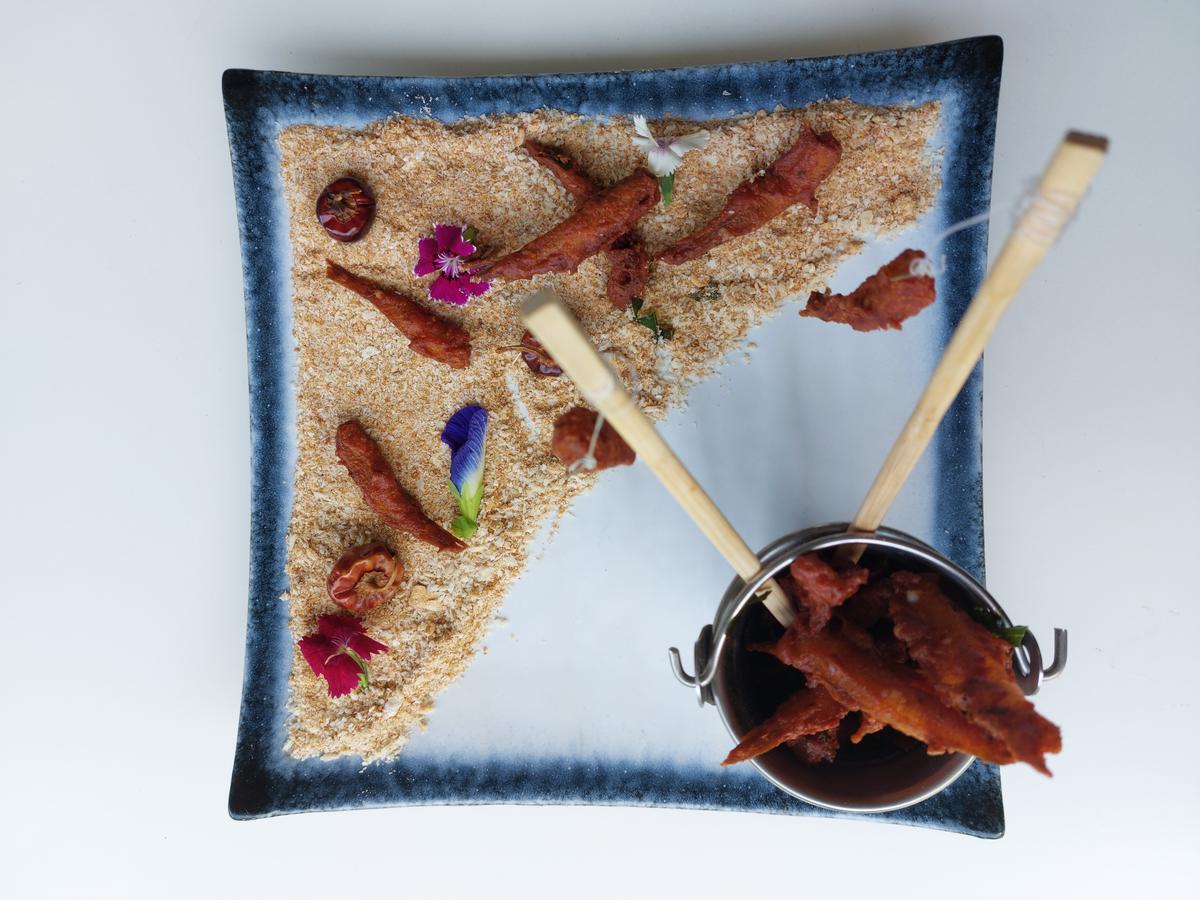Imagine this: you are strolling through a sun-drenched street somewhere in South India, sweat clinging to your brow, the cacophony of honking rickshaws and sizzling snacks filling your ears. Suddenly, a waft of spice and coconut milk lures you towards a humble stall, where a grinning vendor whips up a fiery fried cauliflower dish that makes your taste buds tango. That is the essence of South Indian street food – a sensory adventure, a cultural immersion, a culinary high-five delivered in a gloriously messy package.
Now, imagine teleporting that experience to the plush confines of Bengaluru’s Radisson Hotel. That is Kari Theory, a love letter to regional street eats, served with starched tablecloths and shiny silverware. The result? A delicious, albeit slightly befuddled, culinary journey.
Do not get me wrong, the food is a symphony of flavours. The afternoon’s opening dish, the Salem thattu vada, is like a party in your mouth – crunchy, juicy, and bursting with chutney-fueled joy. The rainbow of shredded carrot, beetroot, coconut, cucumber, sev, coriander, mint, and beige papdi is a delight to the eyes as much as to the tongue.
The cauliflower mundiri varuval from the streets of Karaikudi is a cooler cousin of the chilli gobi (dry). It consists of crisp, red cauliflower florets with roasted cashews in a spicy masala served in a newspaper cone for an authentic, finger-licking (but maybe not at this fancy table) experience. It is a perfect substitute for popcorn during live sports or movie watching.
The paalkatti inji roast is a fiery tango between deep-fried paneer (laced with ginger) and coconut milk, leaving you wanting more. The nethili fry that came after this looked cool and tasted hot. The tiny, fiery red fried fish was plated beautifully with sprinkled fried parotta powder that resembled beach sand. The intention, it seemed, was to take us to the beaches of Chennai, where the nethili fry is famous.

Nethili Fry
| Photo Credit:
Anirudh Nair
But here is the thing: the ambience of Kari Theory feels more like a high-society tea party than a street food fiesta. It is like watching a Kollywood kuthu number choreographed by Martha Graham – impressive, technically perfect, but missing that raw, infectious energy. Where is the aroma of roasting spices wafting through the air? Where is the symphony of clanging pots and sizzling pans? Where is the friendly vendor with a mischievous glint in his eye, ready to banter about the weather, cinema, and politics as he boasts about his own recipe?
Thankfully, Chef Vasudevan chips in. His infectious enthusiasm and detailed explanations about each dish’s origin are like a shot of street-food adrenaline. He regales you with tales of his culinary expeditions across South India, making you feel like you are right there with him, dodging rickshaws and bargaining for spices. He even hints at upcoming street food festivals, promising to inject some much-needed chaos (read: delicious pandemonium) into the mix.
So, is Kari Theory worth a visit? Absolutely! The food is delicious, and Chef Vasudevan’s passion is contagious. But be prepared for a culinary experience that is more like a handshake from a well-groomed gentleman than a street-side elbow bump from your best friend.
Maybe Kari Theory can be the bridge between fine dining and street-side chaos. Perhaps, with a touch more grit, a dash of informality, and maybe even newspaper-lined tables, they can capture the true soul of their concept. Until then, it is still a delicious journey; just remember to bring your imagination and a willingness to embrace the slightly paradoxical experience.

COMMents
SHARE